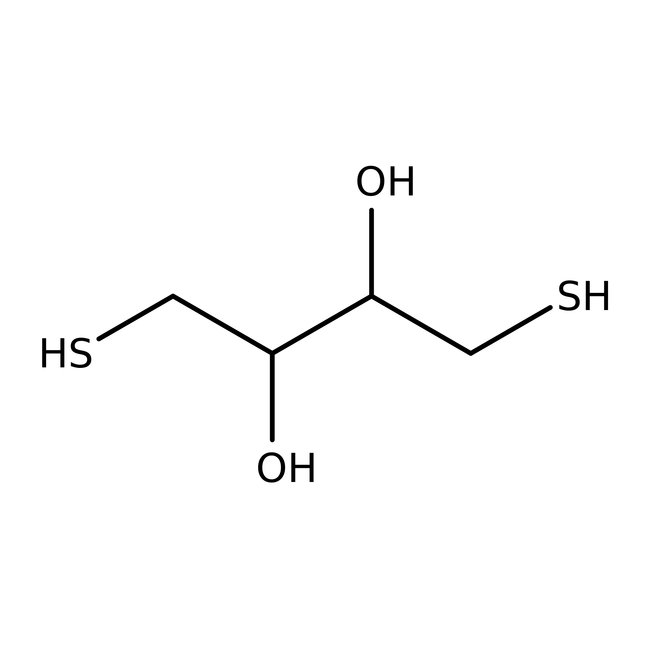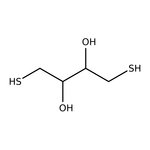Search Thermo Fisher Scientific
Thermo Scientific Chemicals
DL-1,4-Dithiothreitol, 99%, for biochemistry
1,4-Dithiothreitol, CAS # 3483-12-3, is a reducing agent commonly used to reduce disulphide bonds in protein studies, such as western blot SDS-page electrophoresis. | CAS: 3483-12-03 | C4H10O2S2 | 154.25 g/mol
Catalog number FSA165685000
View Price:Sign InSign in to see your account pricing. Need an account? Register with us today.
Quantity:
500 g
Specifications
Chemical Name or MaterialDL-1, 4-Dithiothreitol
CAS3483-12-03
Absorbance(1M soln. in water), (1 M soln. in water) at 0nm, 0.035 max. at 500nm
Health Hazard 1Serious eye damage/eye irritation (category 2), Acute toxicity (category 4), Specific target organ toxicity after single exposure (category 3), Skin corrosion/irritation (category 2)
Health Hazard 2Causes serious eye irritation, Harmful if swallowed, May cause respiratory irritation, May form combustible dust concentrations in air, Causes skin irritation
View more
This Thermo Scientific Chemicals brand product was originally part of the Acros Organics product portfolio. Some documentation and label information may refer to the legacy brand. The original Acros Organics product / item code or SKU reference has not changed as a part of the brand transition to Thermo Scientific Chemicals.
General description
- 1,4-Dithiothreitol (DTT or Cleland's reagent) reduces disulfide bonds in proteins, leading to loss of native conformation
- DTT is not stable in solution and should be prepared in small aliquots prior to use; the use of EDTA in the solution can increase the half-life of DTT
- Typically used at a final concentration of 0.1M for protein stabilization; recommended to create a 1M stock
Applications
- Protects thiol groups from oxidation and acts as a chemical chelator in solution; maintains proteins in the denatured state
- Common applications include SDS-page electrophoresis and protein isolation
RUO – Research Use Only



